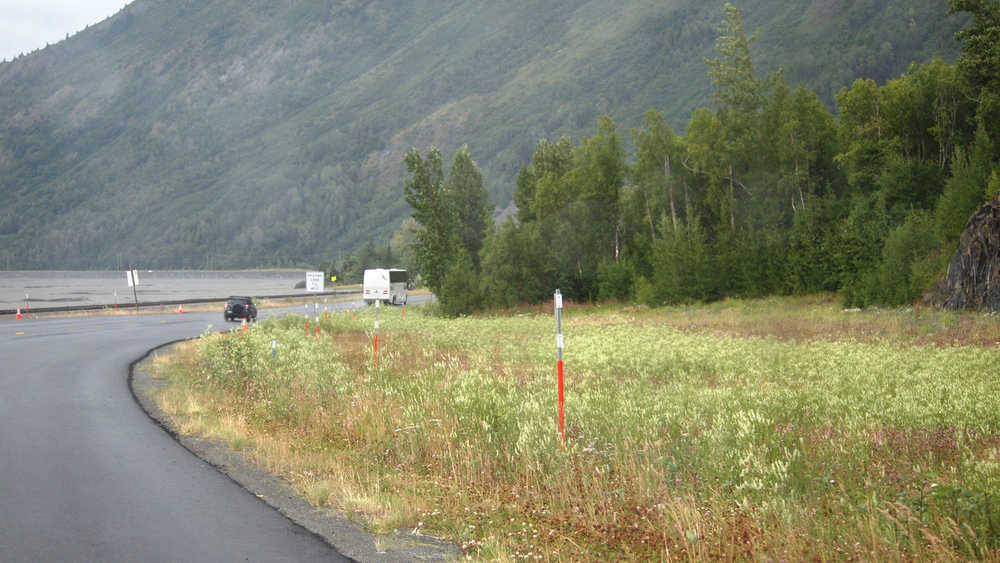The Kenai Peninsula is a big chunk of land. With more than 6 million acres, it’s about the size of Belgium or Maryland. You could almost forget it’s a peninsula jutting out into the Gulf of Alaska except that the drive around Turnagain Arm is a frequent reminder that the Kenai is ALMOST separated from the adjacent mainland by a once-glacial-valley now filled by saltwater. But other than adding perhaps another hour onto our drive to Anchorage, and yet another incredible opportunity to see mountain goat and Dall sheep mixing it up at sea level within sight of frolicking belugas even as the surf-able bore tide rolls through, it really just amounts to an inconvenience for most of us.
But that isthmus that separates mainland Alaska from the Kenai Peninsula is more than a minor inconvenience in the natural world. Isthmus, a word derived from ancient Greek, literally means “narrow passage or narrow neck of land.” At only 10 miles wide, the Kenai isthmus is indeed narrow, straddling the waters of Prince William Sound and the Cook Inlet between Portage and Whittier. It was likely completely covered by glaciers until about 16,000 years ago, and then became mostly ice free 7,000 years ago, of which the rapidly receding Portage Glacier is all that remains.
The passage was called “portage” as it was used as one for centuries by Alaska Natives and Russians to travel across the isthmus. I read one account that it was used by miners around the time of the 1898 Gold Rush to reach Sunrise City on the Kenai Peninsula.
Now, of course, that same isthmus is partially consumed by the human footprint: the town of Whittier, the linear corridors of the Sterling Highway and Alaska Railroad, and the Alaska Wildlife Conservation Center, Begich-Boggs Visitor Center, and the Forest Service campgrounds and trails along Portage Glacier Road. All of these wonderful facilities for people mean it’s just a bit narrower strip of undeveloped land than nature left behind after the glaciers receded.
For some wildlife this is a big deal. The isthmus can serve as a geographic bottleneck, reducing immigration onto, and emigration off of, the Kenai Peninsula. Over time, genetic diversity can be reduced, leading to inbreeding at low populations and general concern about the ability of populations to respond to environmental stressors such as novel diseases or rapid climate warming.
A research paper published just this year in the journal Alces, coauthored by Thomas McDonough and Sean Farley, two local biologists from the Alaska Department of Fish and Game, showed that genetic diversity of moose on the Kenai Peninsula is 18 percent lower than that of moose in the Anchorage area. Another paper published in the Canadian Journal of Zoology in 2008 showed that brown bears on the Kenai Peninsula have lower genetic diversity (as measured by mitochondrial DNA haplotypes) than most other brown bear populations in Alaska. A third paper in the Journal of Mammology in 2005 also showed low haplotype and nucleotide diversity in wolverines from the Kenai Peninsula when compared to populations elsewhere in North America.
At the end of the day, it doesn’t mean that these species are in eminent threat of extinction from the Kenai Peninsula. But lower genetic diversity does suggest we need to appreciate that our populations are more vulnerable and so they should be managed more conservatively than larger populations with higher gene flow on the mainland. It also suggests that we give some thought to ensuring that the isthmus is managed in a way that retains landscape connectivity to ensure movement (and gene flow) between the mainland and peninsula.
But here’s the rub. However much the isthmus may reduce migration and dispersal of some native wildlife species, particularly mammals, the highway and railroad that runs the length of the isthmus also serve as vectors to introduce exotic and invasive plants to the Kenai Peninsula.
Over successive years, I’ve watched as first dandelions, then oxeye daisy, then butter and eggs, then birdsfoot trefoil, then orange hawkweed, and lastly fall dandelion have migrated south down the Seward Highway. White sweetclover seems to have taken an alternative route and skipped from Turnagain Arm via the rail to the Seward Depot. We treat these weeds when they eventually arrive on the borders of the Kenai National Wildlife Refuge but, by then, it’s too late to prevent them from spreading throughout the peninsula.
So the isthmus needs to be managed as the double-edge sword that it is. Maintain a contiguous green infrastructure to ensure wildlife movement, but manage the heck out of the contiguous gray infrastructure (highway and rail) to ensure that even more invasives don’t make their way down from the big city and port of Anchorage, where half of Alaskans call home.
Perhaps this problem deserves the attention of an interagency, multi-stakeholder group that can work to coordinate future development and weed management on the isthmus in a smart and thoughtful way. In this instance, a little planning can go a long way toward keeping our wildlife and their habitats healthy.
Dr. John Morton is the supervisory biologist at Kenai National Wildlife Refuge. Find more information at www.fws.gov/refuge/kenai/ or www.facebook.com/kenainationalwildliferefuge.

